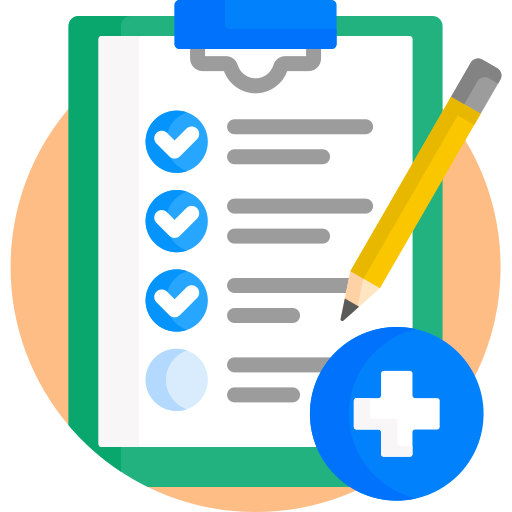Need Help ? Call 06292253004 !!
📍 Detecting...
Select Location
Upper GI Endoscopy
An upper GI endoscopy test is conducted by the doctor to examine problems related to your upper gastrointestinal tract like the oesophagus (food pipe), stomach, and small intestine.
₹1800 (₹2000)
CLINICA DIAGNOSTICS - BARASAT
Address: Noapara Bazar, Krishnanagar Road, Kolkata 700124
CLINICA DIAGNOSTICS - CHAKDAHA
Address: 815 Singher Bagan Road, Joykrishnapur, Chakdah, Nadia - 741222
About Upper GI Endoscopy :
What is Endoscopy?
Endoscopy is a medical procedure that uses a flexible tube with a camera and light on the end to visually examine the inside of a patient's body. The tube, called an endoscope, is inserted through a natural opening, such as the mouth or rectum, or through a small incision.
Endoscopy is used to:
1. Diagnose and treat conditions affecting the digestive tract, such as ulcers, inflammation, and cancer
2. Examine the lungs and airways to diagnose conditions such as bronchitis and lung cancer
3. Investigate symptoms such as abdominal pain, bleeding, and difficulty swallowing
4. Perform procedures such as removing polyps, taking tissue samples for biopsy, and stopping bleeding
Types of Endoscopy:
1. Gastroscopy (upper GI endoscopy): examines the esophagus, stomach, and duodenum
2. Colonoscopy: examines the colon and rectum
3. Bronchoscopy: examines the lungs and airways
4. Cystoscopy: examines the bladder and urethra
Endoscopy is a minimally invasive procedure that can help diagnose and treat a range of conditions, often avoiding the need for surgery.
What is the process of Upper GI Endoscopy?
Upper GI Endoscopy, also known as Esophagogastroduodenoscopy (EGD), is a medical procedure that visually examines the upper digestive tract using a flexible tube with a camera and light on the end. Here's the step-by-step process:
Preparation:
1. Fasting: The patient is asked to fast for 6-12 hours before the procedure.
2. Medication: The patient may be given medication to relax and sedate them during the procedure.
Procedure:
1. Insertion: The endoscope is inserted through the mouth and guided through the esophagus, stomach, and duodenum (the first part of the small intestine).
2. Visualization: The doctor visually examines the inside of the upper digestive tract using the camera and light on the endoscope.
3. Air insufflation: Air is pumped into the stomach and duodenum to inflate them and provide a clear view.
4. Biopsy: A sample of tissue may be collected from the stomach lining or duodenum for further examination.
5. Polyp removal: If any polyps are detected, they may be removed during the procedure.
After the Procedure:
1. Recovery: The patient is taken to a recovery room to rest and recover from the sedation.
2. Results: The doctor will discuss the results of the endoscopy with the patient.
3. Follow-up: The patient may be scheduled for a follow-up appointment to discuss further treatment.
Note: The entire procedure typically takes around 30-60 minutes. Upper GI Endoscopy is used to diagnose and treat conditions such as stomach ulcers, gastroesophageal reflux disease (GERD), and stomach cancer.
What is Upper GI Endoscopy used for?
Upper GI Endoscopy, also known as Esophagogastroduodenoscopy (EGD), is a medical procedure that visually examines the upper digestive tract using a flexible tube with a camera and light on the end. Here's the step-by-step process:
Preparation:
1. Fasting: The patient is asked to fast for 6-12 hours before the procedure.
2. Medication: The patient may be given medication to relax and sedate them during the procedure.
Procedure:
1. Insertion: The endoscope is inserted through the mouth and guided through the esophagus, stomach, and duodenum (the first part of the small intestine).
2. Visualization: The doctor visually examines the inside of the upper digestive tract using the camera and light on the endoscope.
3. Air insufflation: Air is pumped into the stomach and duodenum to inflate them and provide a clear view.
4. Biopsy: A sample of tissue may be collected from the stomach lining or duodenum for further examination.
5. Polyp removal: If any polyps are detected, they may be removed during the procedure.
After the Procedure:
1. Recovery: The patient is taken to a recovery room to rest and recover from the sedation.
2. Results: The doctor will discuss the results of the endoscopy with the patient.
3. Follow-up: The patient may be scheduled for a follow-up appointment to discuss further treatment.
Note: The entire procedure typically takes around 30-60 minutes. Upper GI Endoscopy is used to diagnose and treat conditions such as stomach ulcers, gastroesophageal reflux disease (GERD), and stomach cancer.
Chat with us!
.png)


 91-6292253005
91-6292253005




